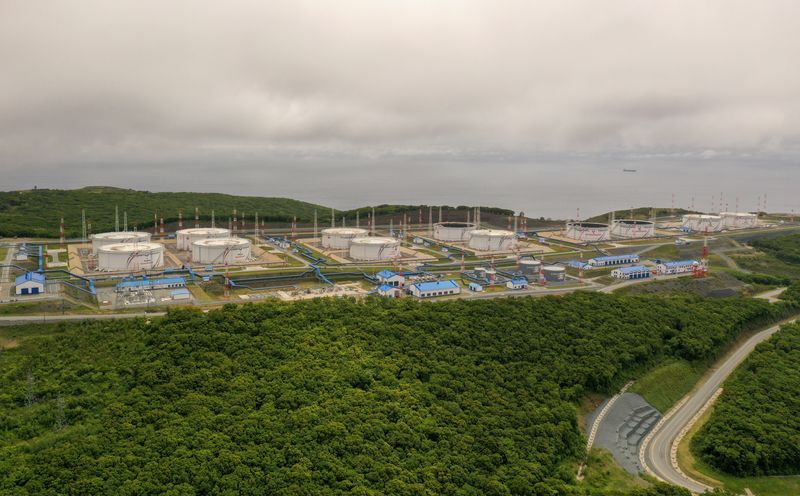(Reuters) -Oil prices edged higher in early trade on Tuesday after falling in the previous session as investors took stock of a potential ceasefire between Israel and Hezbollah, weighing on oil’s risk premium.
Brent crude futures rose 15 cents, or 0.21%, to $73.16 a barrel as at 0705 GMT, while U.S. West Texas Intermediate crude futures were at $69.09 a barrel, up 15 cents, or 0.22%.
Both benchmarks settled down $2 a barrel on Monday following reports that Lebanon and Israel had agreed to the terms of a deal to end the Israel-Hezbollah conflict, which triggered a crude oil selloff.
Market reaction to the ceasefire news was “over the top”, said senior market analyst Priyanka Sachdeva at Phillip Nova.
While the news calmed fear of disruption to Middle Eastern supply, the Israel-Hamas conflict “never actually disrupted supplies significantly to induce war premiums” this year, Sachdeva said.
“The vulnerability of oil prices to geopolitical headlines lacks foundational backup and, coupled with the inability to maintain recent gains, reflects weakening global demand for oil and suggests a volatile market ahead.”
Iran, which supports Hezbollah, is an OPEC member with production of around 3.2 million barrels per day, or 3% of global output.
A ceasefire in Lebanon would reduce the likelihood that the incoming U.S. administration will impose stringent sanctions on Iranian crude oil, said ANZ analysts.
If President-elect Donald Trump’s administration returned to a maximum-pressure campaign on Tehran, Iranian exports could shrink by 1 million bpd, analysts have said, tightening global crude flows.
In Europe, Ukraine’s capital Kyiv was under a sustained Russian drone attack on Tuesday, Mayor Vitali Klitschko said.
Hostilities between major oil producer Russia and Ukraine intensified this month after U.S. President Joe Biden allowed Ukraine to use U.S.-made weapons to strike deep into Russia in a significant reversal of Washington’s policy in the Ukraine-Russia conflict.
Elsewhere, OPEC+ may consider leaving its current oil output cuts in place from Jan. 1 at its next meeting on Sunday, Azerbaijan’s Energy Minister Parviz Shahbazov told Reuters, as the producer group had already postponed hikes amid demand worries.
On Monday, Trump said he would sign an executive order imposing a 25% tariff on all products coming into the U.S. from Mexico and Canada. It was unclear whether this would include crude oil.
The vast majority of Canada’s 4 million bpd of crude exports go to the U.S. Analysts have said it is unlikely Trump would impose tariffs on Canadian oil, which cannot be easily replaced since it differs from grades that the U.S. produces.
“Contrary to today’s sell-off in risk assets, I think the tariff announcements are actually risk-positive because they are lower than consensus expectations,” said market analyst Tony Sycamore at IG.
Trump’s proposed additional 10% tariffs on Chinese imports are “well below” the 60% level he threatened pre-election, Sycamore said.
For the time being, markets are eyeing Trump’s plan to increase U.S. oil production, which has been near record levels throughout 2022 to 2024 and absorbed supply disruption from geopolitical crises and sanctions, Phillip Nova’s Sachdeva said.




